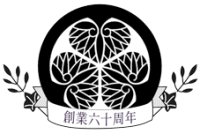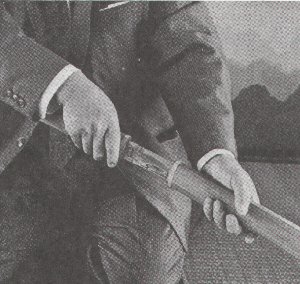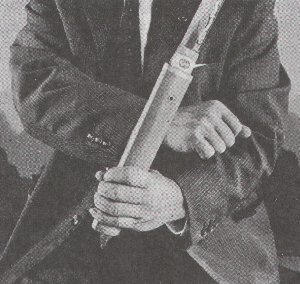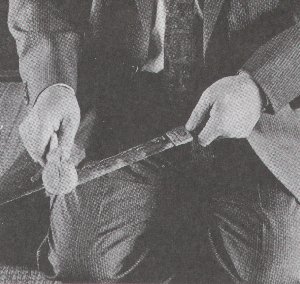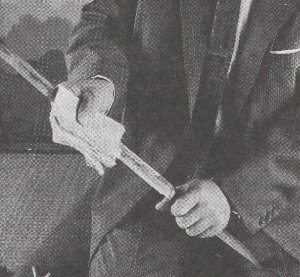How to take care of Swords - 2
| Manual of How to handle and Take Care of Swords_2 | |||||
| B) Method of Swordcare 1. Lay down the mounted blade and push the peg out in preparetion for removing the hilt. 2. Pull the blade out of the scabbard. 3. To remove the hilt, hold its end with the left had on the side where the back of the blade is fit, and keep the blade in a slightly angled upright position. Wse the right fist to hit the left wrist lightly a few times. When the tang(Nakago) becomes slightly loosened in the hilt, repeat until the tang comes out of the hilt by itself. When there is enough room to grasp the tang, the blade may be pulled out of the hilt by the right hand. Be careful not to hit the left wrist too hard with the right hand as there is a danger that blades with short tang like Tanto might bounce out of the hilt entirely. Therefore, the initial impact must be light, just to check how tightly the tang is fixed in the hilt. Then, the force of subsequent blows must be adjusted accordingly. When the blade is taken out of the hilt, the peg removed from the hilt should be replaced. 4. If the blade is mounted in a full Koshirae, other attachments such as swordguard(Tsuba) and spacers(Seppa) on both sides of the swordguard in addition to the collar must be replaced. When the collar is fit too tightly to remove, it can be loosened by hitting it with a wooden hammer on the back(Mune) after covering the collar with a cloth for protection. 5. The wiping process requires two pieces of paper. The initial one removes the old oil and dust, which is called preliminary cleaning. First place the cleaning paper on the back and fold it into halves toward the edge. Then, hold the paper covered blade from above the back so that the thumb and forefinger grip each side of the cutting section from above the paper. Hardly any force is needed to wipe the blade upward, one way, starting from the base. When the cleaning papeer reaches the point, be particularly careful in wiping lightly. No pressure or friction must be put on the point. When expertise is attained, the wiping action can also be both ways, up and down. Lack of experience could cause the cutting of paper or even fingers and thus it must be strictly avoided. |
|
||||
| 6. In case the oil cannot be removed with
ease, cotton or gauze soaked in benzene or
pure alcohol may be used in the same wiping
manner as described above. 7. The powdering starts from the base toward the tip on the obverse in a light, uniform patting motion to cover the blade surface. Then turn the blade over and start patting from the point downward toward the base. 8. Then, use the other sheet of paper to wipe the powder off the blade surface in the same manner as described in (5) in this section. If oil remains, some more powdering and wiping is necessary. 9. When the surface is throughly clean, check for the presence of rust, flaws and other damages. Then, without putting back the hilt, collar and other attachments, the blade alone must be placed back in the scabbard or rest the blade alone on the soft cusion called Katana-makura so that blade surface never touches on the hard items such as table top. It should be noted that the two kinds of wiping paper used in this process must not be interchanged and should have distinct purposes-preliminary and final. |
|
||||
|
|||||
